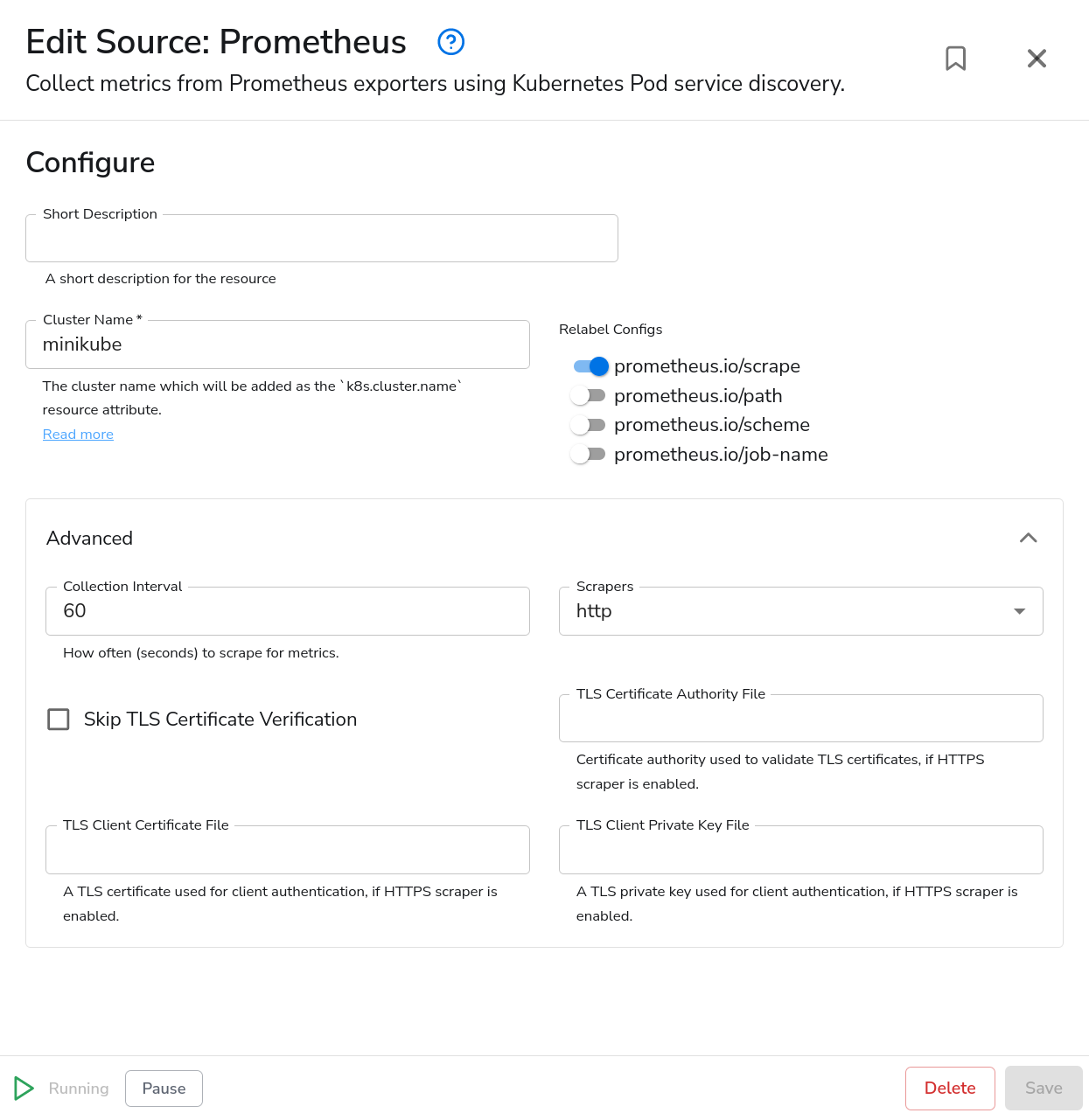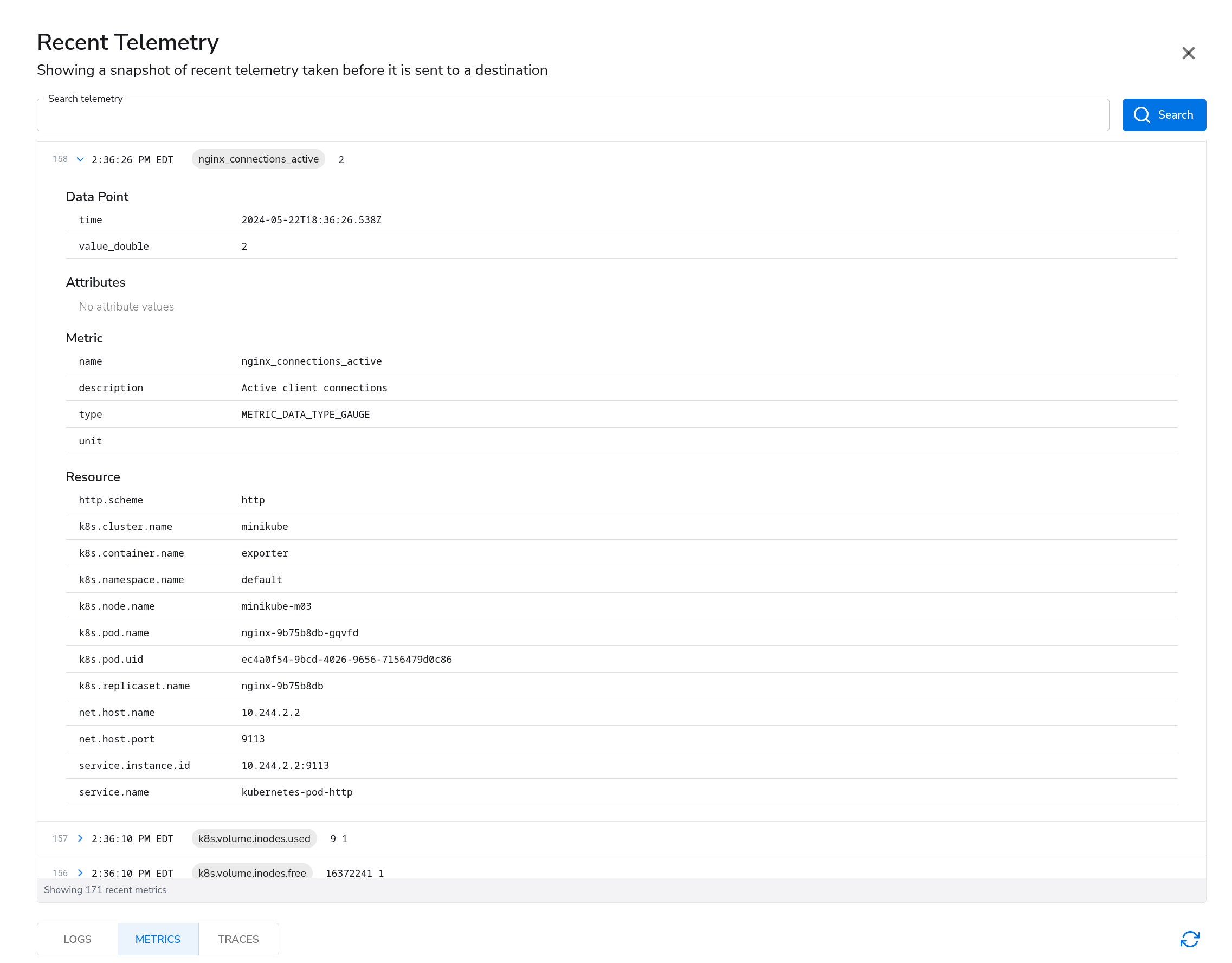| Platform | Metrics | Logs | Traces |
|---|---|---|---|
| Kubernetes DaemonSet | ✓ | ||
| OpenShift 4 DaemonSet | ✓ |
| Field | Description |
|---|---|
| Cluster Name* | The cluster name that will be added as the k8s.cluster.name resource attribute. |
| Relabel Configs | Enable or disable relabel configurations. See Relabel Configs. |
| Scrapers | Enable or disable HTTP and HTTPS scrapers. |
| Collection Interval | Sets how often (seconds) to scrape for metrics. |
| Skip TLS Certificate Verification | Enable to skip TLS certificate verification. |
| TLS Certificate Authority File | Certificate authority used to validate the exporters TLS certificate. See Transport Layer Security. |
| TLS Client Certificate File | A TLS certificate used for client authentication if mutual TLS is enabled. See Transport Layer Security. |
| TLS Client Private Key File | A TLS private key used for client authentication if mutual TLS is enabled. See Transport Layer Security. |
Relabel configs are used to control how detected pods are scraped. There are four options.
When enabled, only pods with the prometheus.io/scrape: "true" annotation will be considered for scraping.
This option is enabled by default, to prevent the receiver from scraping all pods.
The default HTTP path is /metrics. The path can be overridden by enabling this option and configuring
the prometheus.io/path annotation.
When this option is enabled, the HTTP scraper (configured with the “Scrapers” option) will only scrape
pods that have the prometheus.io/scheme: "http" annotation set. Similarly, the HTTPS scraper will only
scrape pods that have the prometheus.io/scheme: "https" annotation set.
This option is recommended when using both HTTP and HTTPS scrapers.
When this option is enabled, the service.name resource attribute will be set to the value of the
pod annotation prometheus.io/job-name. This allows you to dynamically set service.name, which defaults
to kubernetes-pod-http and kubernetes-pod-https, depending on which scraper is in use.
When using Relabel configs, make sure to annotate your pods. Pod annotations are set at
spec.template.metadata.annotations, not to be confused with metadata.annotations.
apiVersion: apps/v1
kind: Deployment
metadata:
name: nginx
spec:
selector:
matchLabels:
app: nginx
replicas: 2
template:
metadata:
annotations:
+ prometheus.io/path: /metrics
+ prometheus.io/port: '9113'
+ prometheus.io/scrape: 'true'
+ prometheus.io/scheme: http
+ prometheus.io/job-name: nginx
When using TLS, if you need to configure a TLS certificate authority or a client key pair, update
your Telemetry Pipeline Agent YAML manifest to include a volumeMount that will mount your TLS files
into the container.
You can find documentation for mounting secrets into a container here.
By default, the Prometheus source is configured to use the HTTP scraper and the prometheus.io/scrape
relabel config is enabled. This means the receiver will only scrape pods that have prometheus.io/scrape: "true"
set in their annotations.
A cluster name is required, and will be set as k8s.cluster.name. You can use a placeholder value if you
intend to use Resource Detection or Add Fields
processors.

Once running on an agent, some notable resource attributes are:
